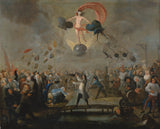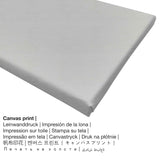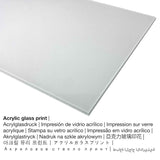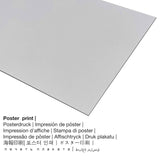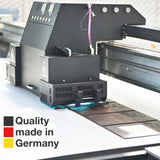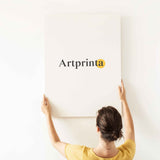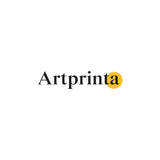Balthazar Nebot, 1730 - Allegory of Fortune - ọmarịcha nka
Ụtụ gụnyere. Mbupu gbakọrọ na ndenye ọpụpụ.
Data ndabere gbasara akụkụ nka mbụ
| Akụkụ nka: | "Alegory of Fortune" |
| Nhazi nke ọrụ nka: | sere |
| Okwu nche anwụ: | nka ochie |
| Narị afọ nka: | 18th narị afọ |
| Afọ okike: | 1730 |
| Ogologo afọ nka nka: | ihe karịrị 290 afọ |
| Usoro nka izizi: | mmanụ na kwaaji |
| Nha nke ihe osise izizi: | Elu: 719 mm (28,30 ″); Ogologo: 892 mm (35,11 ″) |
| Ụlọ ihe ngosi nka: | Yale Center maka British Art |
| Ebe ebe ngosi nka: | New Haven, Connecticut, Njikota Obodo Amerika |
| Dị n'okpuru: | Yale Center maka British Art |
| Ụdị ikike nka: | ngalaba ọha |
| Site n'aka: | Yale Center maka nka nka British na Wikimedia Commons |
Ozi ndabere izugbe gbasara onye na-ese ihe
| Aha onye nka: | Balthazar Nebot |
| Nationality: | British |
| Ọrụ: | onye na-ese ihe |
| Mba onye si: | United Kingdom |
| Otu nka: | nna ukwu ochie |
| Afọ nwụrụ: | 1786 |
Ihe omuma
| Nkewa ngwaahịa: | nka nka |
| Usoro mmeputakwa: | dijitalụ mmeputakwa |
| Usoro nhazi: | Mbipụta UV ozugbo |
| Mmalite ngwaahịa: | emepụtara na Germany |
| Ụdị ngwaahịa: | mmepụta ihe na-achọ |
| Ngwaahịa were: | mgbidi mma, mgbidi gallery |
| Ndepụta: | usoro odida obodo |
| Oke akụkụ: | ( Ogologo: obosara) 1.2: 1 |
| Akụkụ akụkụ pụtara: | ogologo bụ 20% ogologo karịa obosara |
| Akwa mmeputakwa dị: | akwụkwọ mmado (akwụkwọ kwaaji), mbipụta ọla (aluminium dibond), mbipụta kanvas, mbipụta iko acrylic (nwere ezigbo mkpuchi iko) |
| Mbipụta kanvas (akwa akwa na etiti ihe ndọtị) dị iche iche: | 60x50cm - 24x20", 120x100cm - 47x39", 180x150cm - 71x59" |
| Mpempe iko acrylic (nwere ezigbo mkpuchi iko) nha dị iche iche: | 60x50cm - 24x20", 120x100cm - 47x39", 180x150cm - 71x59" |
| Ụdị akwụkwọ mmado (akwụkwọ kwaaji) dị iche iche: | 60x50cm - 24x20", 120x100cm - 47x39" |
| Mpempe akwụkwọ Dibony (ihe alumnium) nha dị iche iche: | 60x50cm - 24x20", 120x100cm - 47x39" |
| ụba: | biko buru n'uche na ngwaahịa a enweghi etiti |
Nye iwu ngwaahịa ọkacha mmasị gị
Maka mbipụta nka ọ bụla anyị na-enye ihe dị iche iche dị iche iche na nha. Nha na ihe ndị a bụ nhọrọ anyị na-enye gị maka nkeonwe:
- Mbipụta nke aluminom: This is a metal print made on aluminium dibond material with an outstanding effect of depth - for a modern look and non-reflective surface. For our Direct Aluminium Dibond print, we print the work of art onto the surface of the white-primed aluminum material. The bright parts of the original work of art shimmer with a silk gloss but without the glare. The colors of the print are luminous, details of the print are very clear, and there’s a matte look that you can literally feel.
- Kwaaji: A printed canvas, which shall not be confused with a canvas painting, is a digital image printed directly on cotton canvas. It makes a distinctive effect of three-dimensionality. Canvas prints are relatively low in weight, which means that it is easy to hang up your Canvas print without the use of any wall-mounts. Therefore, a canvas print is suited for any kind of wall.
- Mbipụta iko acrylic (nke nwere ezigbo mkpuchi iko): The acrylic glass print, which is sometimes described as a print on plexiglass, makes your favorite original into brilliant wall décor and is a great alternative to dibond and canvas prints. The work of art will be manufactured with modern UV direct printing technology. This makes sharp and rich print colors. With an acrylic glass art print sharp contrasts and also granular image details will be more visible because of the very subtle tonal gradation. The plexiglass with real glass coating protects your selected fine art print against light and heat for between 40-60 years.
- Mbipụta akwụkwọ mmado (akwa akwa akwa): A poster is a printed canvas with a slight surface texture. The poster print is suited for putting the art print with a special frame. Please bear in mind, that depending on the size of the canvas poster print we add a white margin of something between 2-6cm round about the work of art, which facilitates the framing with your custom frame.
Banyere ngwaahịa a
a nka ochie a na-ese ihe osise Balthazar Nebot in 1730. The original version of the work of art was made with the size: Height: 719 mm (28,30 ″); Width: 892 mm (35,11 ″). Mmanụ na kwaaji was used by the painter as the medium of the piece of art. Today, the work of art can be viewed in in the Yale Center maka British Art's nchịkọta nka dijitalụ, nke dị na New Haven, Connecticut, Njikota Obodo Amerika. Ọrụ nka a, nke bụ akụkụ nke ngalaba ọha is included with courtesy of Yale Center for British Art & Wikimedia Commons.: . On top of that, alignment of the digital reproduction is in odida obodo format ya na oke nke 1.2: 1, nke pụtara na ogologo bụ 20% ogologo karịa obosara.
Important information: We try all that we can to describe our art products as accurately as possible and to exhibit them visually on the various product detail pages. Please keep in mind that some pigments of the print products and the printing might diverge to a certain extent from the image on your device's monitor. Depending on the screen settings and the nature of the surface, not all color pigments are printed as exactly as the digital version on this website. Bearing in mind that all our are printed and processed by hand, there may also be minor discrepancies in the size and exact position of the motif.
© nwebisiinka, Artprinta.com (Artprinta)

